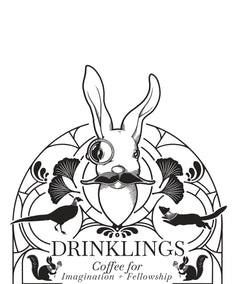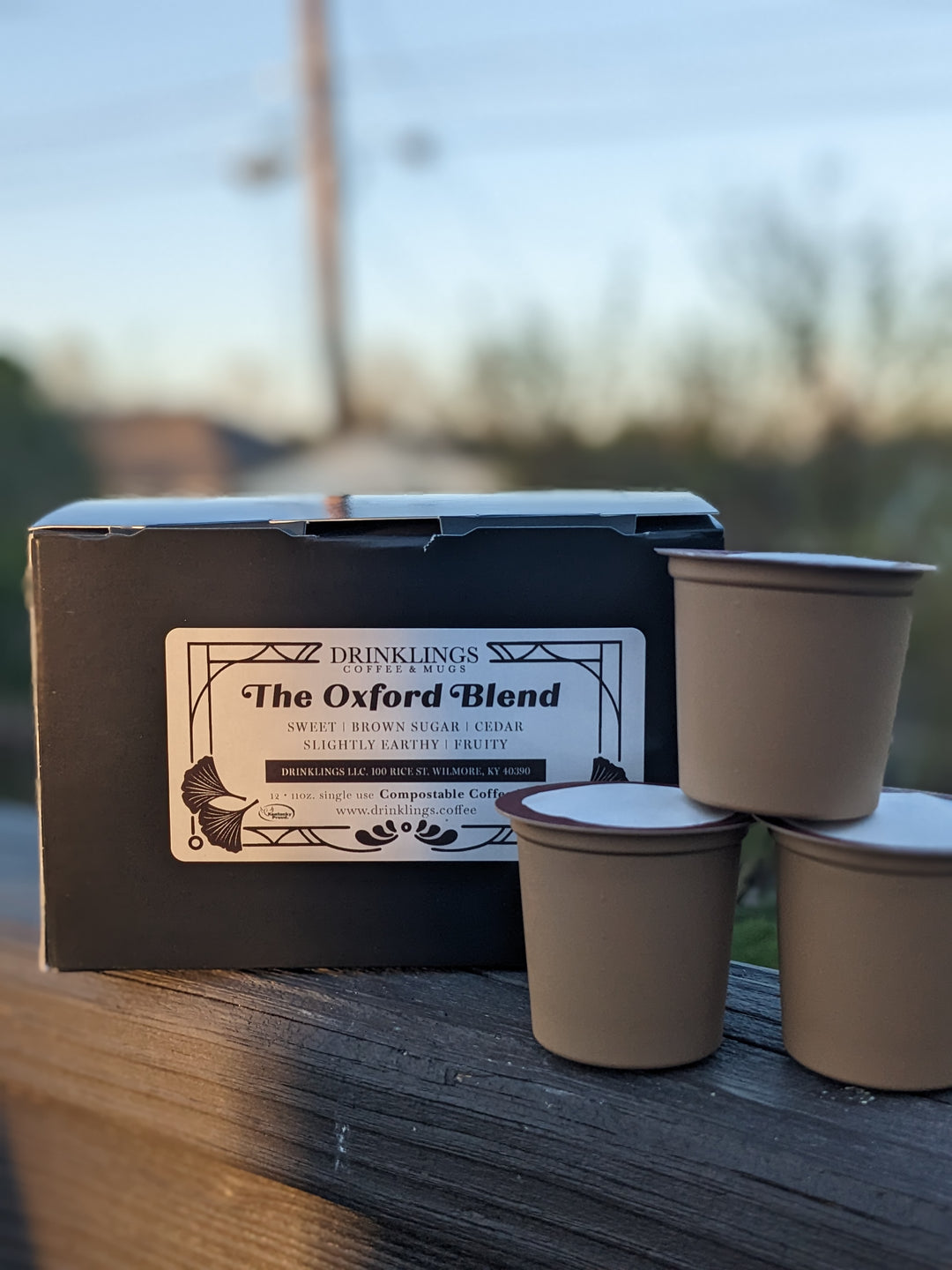Seeing Dragons in Mooreeffoc: How a Coffee Room Can Help You See What is Really There
As you walk in the doors of Drinklings Coffee House in Wilmore, Kentucky you’ll see a spotlight lit calligraphed parchment hung above the chimney which reads the following: eeffoc moor. The picture sits starkly opposite to a mirror on the other side of the room in which, if you’re standing at an appropriate angle, clearly shows what the picture says in a more comprehensible manner: Coffee Room.
This is not merely an attempt to maintain the quirkiness of the fun house vibe that you quickly notice as you enter into the space with sloping floors and angled floors, though we think it compliments that. That particular quirkiness is the result of a century old house that has slowly had its foundations shift over the years. It fits the wonkiness of the coffee house but it goes far beyond that. It expresses a particular view of things we hope as an organization and a community we get to exercise and appreciate. It reflects a necessary component of Imagination lost in a culture built on rush and hurry. And it points towards the necessity of reflection and contemplation in certain spaces in our lives.
The eeffoc moor picture is a twist on something I read years ago in Tolkien’s essay On Fairy Stories. This essay, which can be found in many places but most contemporarily in Tales from a Perilous Realm, is something of J.R.R. Tolkien’s own thought on the importance of Imagination as a means of arriving at truth and meaning. He explains,
“And there is (especially for the humble) Mooreeffoc, or Chestertonian Fantasy. Mooreeffoc is a fantastic word, but it could be seen written up in every town in the land. It is Coffee rom, viewed from the inside through a glass door, as it was seen by Dickens on a dark London day; and it was used by Chesterton to denot the queerness of things that have become trite, when they are seen suddenly from a new angle” (373-74).
Part of the task of Imagination is the ability to see something real and as it is but from a different angle. This is not relativistic thinking either epistemologically or linguistically. Neither Tolkien, Chesterton, or Dickens thought that there was anything but one room that was a specific coffee room. Nor did they think that the words coffee room were meaningless or could be attributed to anything but a coffee room. Both coffee and room are highly specific terms, after all. But they did believe in the necessity of seeing real things from different angles as a means of liberating oneself from the shackles of banality.
Chesterton makes this point in his The Everlasting Man when he suggests that we’ve become far too used to seeing horses as mere things and not really with the awe that we should: as dragons, tamed by man. Of course, Chesterton is not saying that horses are dragons but that when we see them properly, we will see them in the same light and awe that we see mythical dragons. To be able to tame the powerful and majestic horse to do our bidding, for war and transportation and service, is nothing that should ever become trite. But because, at least in his time, this was the status quo, the majestic nature of taming and riding horses had lost its power. It had become a novelty. Something expected, something “used to.”
Chesterton talks about this in another place and in it shares Tolkien’s disdain for the motor-vehicle which replaced slower forms of transit like horseback, biking, and walking. He states,
“It is inspiriting without doubt to whizz in a motor-car round the earth, to feel Arabia as a whirl of sand or China as a flash of rice-fields. But Arabia is not a whirl of sand and China is not a flash of rice-fields. They are ancient civilizations with strange virtues buried like treasures. If we wish to understand them it must not be as tourists or inquirers, it must be with the loyalty of children and the great patience of poets. To conquer these places is to lose them. The man standing in his own kitchen-garden, with fairyland opening at the gate, is the man with large ideas. His mind creates distance; the motor-car stupidly destroys it....”
It’s hard for us to share this same sentiment nowadays when vehicular transit is so typical and normalized, but we might recognize that like the horse, even the vehicle with all its moving parts, its capability, its potential should really be seen as our interplanetary spaceship. It takes us to other worlds we would never have ever imagined. It is easy for me to sit here this evening after spending an entire day on the edge of this continent and minimize the awesomeness of the fact that this ‘spaceship’ will tomorrow transport me hundreds of miles away to the rolling hills of the Bluegrass in time to cook dinner and put in an evening exercise. In no other day and age of history has anything of the sort been so possible and yet we merely see a ‘car’ as a car because we never allow ourselves to see it as anything else! It’s like that old comedian who remarked how ridiculous our modern society is for allowing flight to become so mundane and boring. We’re flying! In the sky! For hours! When a hundred thousand years of human history has been unable to do so! And we are more amazed at our phones than the clouds, the sky, and the earth around us that we are flying through at hundreds of miles an hour. The plane is not a plane. It is an eagle.
Tolkien, Chesterton, and Dickens are simply saying this: don’t become used to what is in front of you. Find a way to see things as they really are, not in the ways that we allow them to become. A cup of coffee in a coffee room can be seen as an elixir of life in a sacred space. A home can be seen as a kingdom. A child (mine just asked me to go rub his back as he fell asleep) can be seen as an immortal soul. Crickets can be heard as a symphony. A book can be seen as an otherworldly portal. All that is needed is some Imagination to see the real thing behind the thing we make it out to be.
So next time you’re in the Coffee Room, try to see everything around you as a Moore Eeffoc or (our version) a eeffoc moor. Try to see that person you’re with as the soul that you are talking with. Look into the cup and see the art so subtly and intricately created by the dance of the milk and espresso. Patiently savor the various components of that coffee and pull out the flavors that no one has ever quite tasted before in the same way you do. See the space as sacred. Your time there as a passing moment in history that will be forever stamped in its archives and memory. See the place, the world, and even yourself around you from a different angle, for if you do you may see something that you didn’t quite expect.




